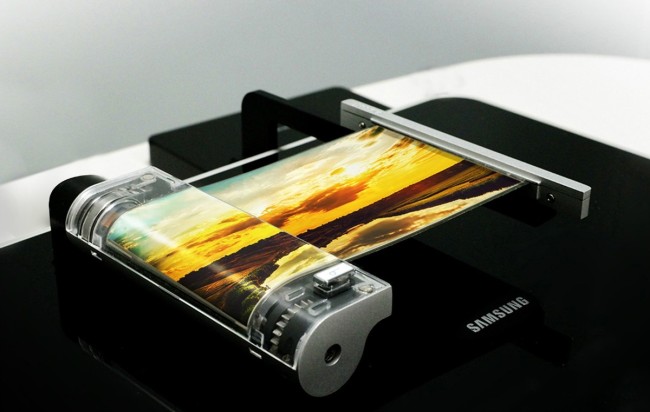[더인베스터(코리아헤럴드)=김영원기자] 삼성전자가 야심 차게 준비 중인 폴더블 스마트폰 ‘갤럭시X’(가칭)의 출시가 기술적인 난항을 겪으면서 지연이 되고 있으며, 기존 예상되던 3분기 출시도 불투명한 상태이다.
디스플레이 업계 전문가와 삼성전자, 삼성디스플레이 등의 관계자들은 갤럭시X가 올해 출시될 것이라는 전망에 회의적인 시각을 보였다.
특히 작년 갤럭시 노트7 사태를 겪은 삼성이 미완의 제품을 출시하게 되면 입을 후폭풍을 생각하면, 갤럭시X의 출시는 더욱 쉽지 않을 것이라고 한다.
익명을 요구한 업계에 정통한 관계자는 “삼성디스플레이가 2005년부터 폴더블 디스플레이 연구를 시작해서 2008년에 처음 접는데 성공했다,“라고 전하며 “그리고 10년이 지났는데 나오지 않는다는 것은 아직 기술적인 트레이드오프(trade-offs)가 많은 것,”이라고 하며 제품 출시에 기술적인 어려움이 많이 남아 있다고 말했다.
그의 의견은 작년 8월 갤럭시 노트7 출시 행사에서 삼성전자 고동진 모바일 부분 사장의 발언과 일치한다. 고 사장은 당시 “현재의 기술 수준으로 폴더블폰을 내놓으면 소비자들이 많이 지적할 것,”이라며 “현재 수준에서 소비자들에게 의미 있는 혁신이라든지 진짜 편의성을 제공하기 위해서는 아직 시간이 좀 더 필요하다,”라고 말했었다.
실제로 폴더블 스마트폰 구현을 위해서 해결해야 할 문제는 한두 가지가 아니다.
스마트폰의 내구성을 위해 단단한 부품을 사용하게 되면 연성이 부족해진다. 그리고 소위 디커플링이라는 현상을 해결해야 하는 숙제도 남아 있다. 디커플링 현상이란 제품 내부의 패널 및 접착테이프들이 제품이 접히면서 접착력을 잃어 분리되는 현상을 말한다.
스마트폰이 접히는 부분에서는 위아래와 내부에서 각기 다른 방향에서 압력이 합쳐져서 발생하는 합성력을 견뎌야 하며, 디스플레이가 수백수천 번이 접히더라도 원래의 형태를 유지해야 하는 것도 해결해야 할 과제이다.
두께에 대한 문제는 또 다른 난관이다. 스마트폰을 접었을 때 최적의 두께는 10mm로, 접힌 부분의 곡률 반경, 즉 접히는 부분에 생기는 빈 원 모양 공간의 반지름, 이 3mm 혹은 그 이하 여야하고, 나머지 4mm의 공간에 배터리, 회로 기판, 카메라, 센서 등을 넣어야 한다.
폴더블 디스플레이 하단에 위치한 각종 센서들, 예를 들어 3D 터치 센서, 지문인식 센서, 등이 문제없이 작동하게 하는 것은 또 넘어야 할 산이다.
업계에 정통한 관계자는 “삼성디스플레이 연구소에서 롤러블, 폴더블 등의 많은 제품을 연구하고 있다,“라고 밝히며, “한두 번의 데모는 쉽지만 실제 사용 가능한 제품을 양산하는 것은 정말 어려운 일,”이라고 덧붙였다.
그는 또한 “지문인식, 3D터치 등 각종 센서들을 결합하면 난이도는 훨씬 더 올라가게 된다,”라고 말했다.
삼성전자와 애플에 부품을 공급하고 있는 부품회사의 한 관계자는 삼성전자의 폴더블 스마트폰 양산 계획이 계속해서 연기되고 있다고 밝혔다. 이 부품회사는 현재 삼성전자의 폴더블 스마트폰에 들어가는 부품을 공급할 예정이다.
해당 관계자는 “현재 연구부서에서 많은 리소스와 인력을 투입하고 있는데 이게 과연 될까 하는 의문이 있다,“라고 밝히며, “폴더블 스마트폰 출시는 올해, 내년 계속 늦어질 수도 있다,”라고 말했다.
(
wone0102@heraldcorp.com)
<영어 원문 기사>Samsung’s foldable smartphone Galaxy X debut unlikely this year
[THE INVESTOR] Rumors about tech giant Samsung Electronics releasing a foldable smartphone, tentatively dubbed the Galaxy X, this year have been gathering steam in recent weeks.
A number of news reports have predicted that the South Korean tech giant would produce the world’s first foldable smartphone this year in limited quantiy of around 100,000 units and unveil it in the third quarter this year.
Display experts and insiders from Samsung Electronics and its display business arm Samsung Display, however, are skeptical over the release of the phone this year. Some of them said the still-fledgling foldable smartphone technology, if launched, could take its toll on the tech giant which was hit hard by the Galaxy Note 7 fiasco last year.
“Samsung Display has conducted a range of projects for rollable and foldable displays at its lab since 2005. After almost a decade since the company first succeeded in folding a functioning display in 2008, the foldable display has not been commercialized yet, which means there are still many technical trade-offs to make and difficulties to overcome,” an industry source told The Investor on condition of anonymity.
His comments are in line with those made by Samsung Electronics Koh Dong-jin in August last year who said more time is needed for Samsung Electronics to unveil a foldable smartphone to offer “meaningful innovations and true convenience to users.”
Although many Samsung fans are placing high expectations on the foldable phone, there are still a range of technical difficulties to be solved first, as the source mentioned.
Among those trade-offs is the one between durability and flexibility. If a set maker uses hard components for the sake of durability, the device could lack flexibility. In addition, the so-called “decoupling,” of display panels, which describes detachment between the panels and adhesives when the device is folded, is a problem that needs to be ironed out.
The area where the screen is folded also needs to withstand forces applied to it from different directions and the display should be kept in shape after repeated use. Thickness is another issue to be dealt with. The optimal thickness of the mobile device when folded is 10 millimeters while the rolling radius needs to be 3 millimeters or less, which leaves 4 millimeters of room to house other components inside the gadget, including a battery, printed circuit boards, cameras and sensors.
Making different display sensors, such as 3-D Touch and fingerprint sensors embedded in the display, working together in a seamless manner is another task to achieve before mass-production.
“Demonstrating these display technologies for a one-time event is easy, but commercializing them is a totally different story,” the industry source said.
An official from a parts supplier for both Samsung Electronics and Cupertino-based Apple also said the project to commercialize Samsung’s foldable smartphone has repeatedly been delayed.
“We are pouring a lot of resources into developing foldable smartphones, but even researchers are unsure about the practicality of the device and worried about the market response,” said the official on the condition of anonymity.
“It seems there needs to be more tests and trials before the commercialization of the foldable smartphone as Samsung surely would not want to face another brouhaha after the Note 7 crisis,” he said.
By Kim Young-won (
wone0102@heraldcorp.com)








![[Today’s K-pop] Blackpink’s Jennie, Lisa invited to Coachella as solo acts](http://res.heraldm.com/phpwas/restmb_idxmake.php?idx=644&simg=/content/image/2024/11/21/20241121050099_0.jpg)